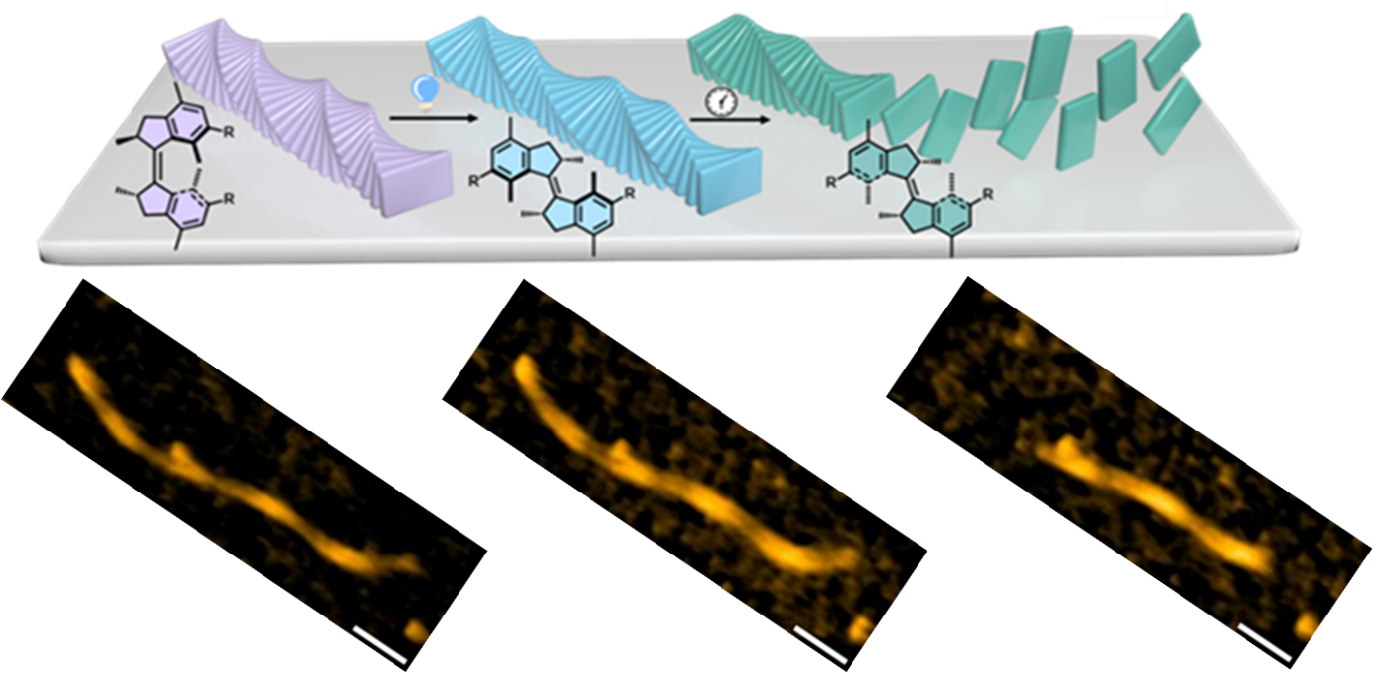Molecular motor induced disassembly of polymers visualised for the first time
In a collaboration between the Feringa and Roos labs at the Rijksuniversiteit Groningen, the dynamics of supramolecular polymers was investigated. The researchers used a fast microscope to study, at the single particle level, depolymerisation of the molecular motor-based polymers. The results, including the first movies ever made of this process, were published this month in the journal Angewandte Chemie.
Supramolecular polymers that respond to light have a major potential for applications in responsive materials. By incorporating molecular motors into supramolecular structures we gain precise control over their polymerisation state, which changes the material properties of the polymers. While changes in macroscopic properties of polymer solutions revealed the adaptive nature of these materials, it remains challenging to capture the dynamic depolymerisation process at the molecular level. The latter requires fast observation techniques combined with in situ irradiation.
The researchers used a High-Speed Atomic Force Microscope (HS-AFM) setup equipped with an UV-light source. This allows for studying the dynamic response of the material at the solid-liquid interface upon shining light onto the sample. When the polymers are irradiated with UV-light, the fibrillar structure starts to fall apart from both of its ends. This was a very surprising finding, as the molecular motors are present all throughout the polymer, yet only the motors in the molecules at the end of the fibers are able to rotate and detach from the fiber. With depolymerisation occurring only at the fiber ends, this material can be applied to mimic some of nature’s specific processes that are dependent on depolymerisation, such as actin and microtubule dynamics. Furthermore, halting the irradiation after a while did not prevent the polymers from breaking down even further, which shows that light can trigger a depolymerisation process capable of sustaining itself even after the light trigger is absent. Such a unique feature is very important for applications in environments where continuous irradiation would harm other processes, for example in living tissue.


Reference:
Chris van Ewijk, Fan Xu, Sourav Maity, Jinyu Sheng, Marc. C. A. Stuart, Ben L. Feringa and Wouter H. Roos, Light-Triggered Disassembly of Molecular Motor-based Supramolecular Polymers Revealed by High Speed-AFM Angewandte Chemie, 2024, e202319387
| Last modified: | 26 February 2024 3.09 p.m. |
More news
-
29 April 2024
Tactile sensors
Every two weeks, UG Makers puts the spotlight on a researcher who has created something tangible, ranging from homemade measuring equipment for academic research to small or larger products that can change our daily lives. That is how UG...
-
16 April 2024
UG signs Barcelona Declaration on Open Research Information
In a significant stride toward advancing responsible research assessment and open science, the University of Groningen has officially signed the Barcelona Declaration on Open Research Information.
-
02 April 2024
Flying on wood dust
Every two weeks, UG Makers puts the spotlight on a researcher who has created something tangible, ranging from homemade measuring equipment for academic research to small or larger products that can change our daily lives. That is how UG...
